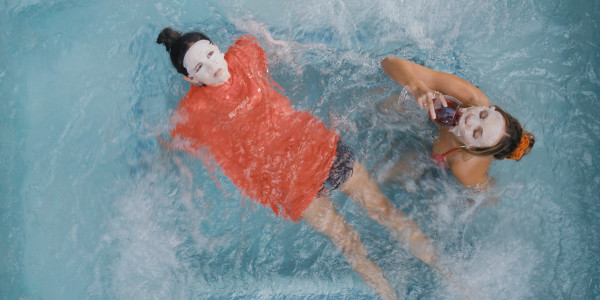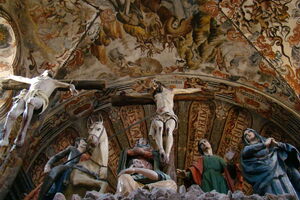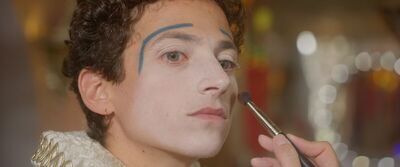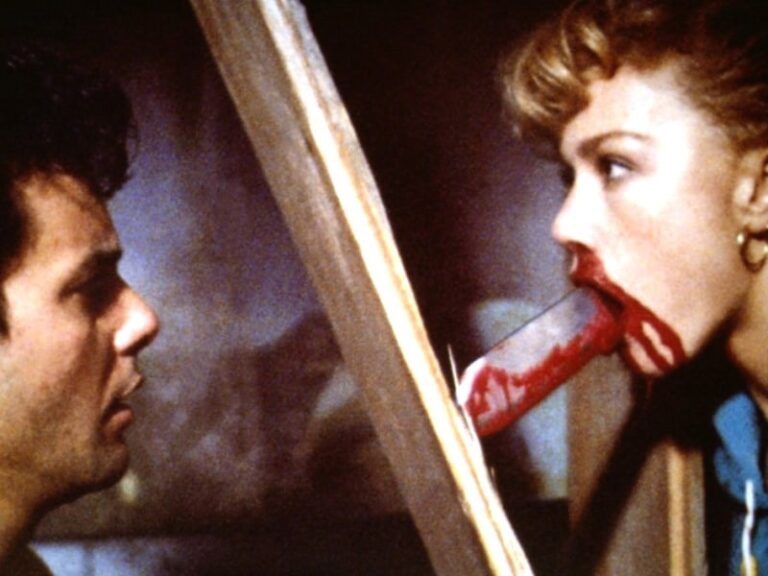Interview with Helena Coan, Director of AUDREY
There are always times when the makeup comes off, or when a wardrobe is tucked away. The spotlight will simmer and the everyday rumblings of production will hush. What happens from there is hardly seen, especially by those who simply enjoy the filmmaking product. But in the case of world icon Audrey Hepburn, it seems that what you saw on the screen was largely what you got off the screen.
Audrey, the new documentary from Universal Pictures available to stream January 5, takes a look at the actress through an incredibly loving lens, one worthy and similar to that which its subject saw the world. From Hepburn’s early years as a bystander victim of World War II to her final days as a global humanitarian, the documentary is all-encompassing and heartfelt.
Film Inquiry recently had the chance to speak with the film’s director, Helena Coan, about her experience crafting the project, including her impressions of Hepburn’s insecurities and her humanitarian work, as well as her intimate decision to incorporate dance into the film.
This interview has been edited for clarity.
Luke Parker with Film Inquiry: You open the film with a quote from Audrey, who says that Hollywood first embraced her because they saw she had “enough there…as a human being to draw out.” How would you describe what Audrey meant there? What did Hollywood see?
Helena Coan: I think Audrey experienced a lot in her life before she came to Hollywood, particularly with her experiences during the war: she almost starved to death and her parents were Nazi sympathizers. And I think because of all those experiences and her longing to be a dancer, I think she had this vulnerability about her that made her so human and real.
She wasn’t from a Hollywood family. She didn’t grow up in the U.S. She was in Europe. So I think she was an outsider in a way. She had this sensitivity and this vulnerability that Hollywood must have seen as something different, I guess. Whether it’s the way she looks, or how she speaks or acts, we intrinsically feel – and I think this is why she’s still such an icon and is still so loved – that she’s one of us, rather than one of them. She’s not a Hollywood blonde bombshell. She looked totally different from other women at the time. She was a real person, and I think Hollywood kind of saw that because the roles that she got were emblematic of that.

All of her roles were transformative roles. Her first role in Roman Holiday, she transforms from this amazing princess into this everyday person – which is kind of a role reversal of her actual life. And I think they saw that difference in her.
A big part of Audrey’s charm, and something you touch on in the film, is her transparency onscreen. She knew how to push her personality through her appearance, be it through fashion or through performance. If you had to choose, which of her performances best captures Audrey the star, and which captures Audrey the person?
Helena Coan: I think the star has got to be Breakfast at Tiffany’s, I guess. But maybe that’s more of how the film was received and how it became so iconic. I think for me, actually, the one that shows her most as a star is Sabrina. I think in that film, the clothes, the way she looks, the way it’s shot, everything is pure Hollywood glamour. It’s a beautiful film and I think that’s her stardom at its height.
I think for her as a person, it’d be the last film she did, which is Always by Steven Spielberg. She plays an angel and she wears this white jumper. She’s only in the film for about five minutes, but for me, that sums her up as a person. She’s this very loving, tender, omnipresent figure.
But I also think she was very similar to how she appeared onscreen. She didn’t have this huge disparity.
Outside archive footage and interview recordings, you chose dance, Audrey’s first passion, to visualize some of her most intimate moments and most complex emotions. What about dance led to that decision?
Helena Coan: I think it was a multi-faceted decision. Firstly, I always wanted to make sure the documentary had another element to it that made it feel more cinematic, more filmic. This film was supposed to be released in cinemas, so that was a really important thing: having an element in the film that made it feel a bit more heightened stylistically.
Secondly, Audrey wanted to be a dancer. That was her number one dream. So I wanted to use a technique that she would have appreciated, would have understood, and would have enjoyed to watch as well.
And I think dance is a beautiful way of symbolizing Audrey’s simultaneous vulnerability and strength. To be a dancer, you have to have this vulnerability and softness, but you’re also this strong athlete. So I thought dance would be a beautiful way to show that. It might not be everyone’s cup of tea, but I love it and I’m really proud of it. It was a bold move, and I think it paid off.
I think it worked out very well. I’ve always said that movies are at their peak with musicals, because I feel like there’s nothing better than a collaboration between sight – the dance – and music. That’s the pinnacle of filmmaking. It’s one thing to watch a recording of a dance, but your camera movement is so much a part of the choreography.
Can you describe your collaboration with Wayne McGregor? What was your role in directing those choreographies?
Helena Coan: My collaboration with him was such a special part of this film. I essentially wrote scripts for each dance sequence – like little short films, I guess – and then I took them to him. Sometimes, I’d write kind of loose ideas for certain dance moves, but he’d read the scripts and come up with a choreography that told the story through dance. So he would rehearse and I would go in and watch the dances and I’d make notes, though I didn’t have many because they were amazing. He totally got it. It was such a true collaboration in that sense.
And then on the actual day, I had creative control over how the dances looked. He would then maybe feed in, “we haven’t got this quite right yet.” It was an amazing experience.
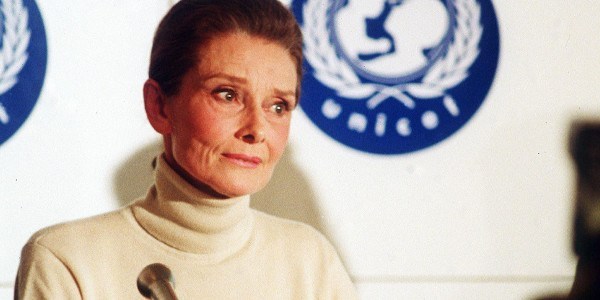
We also worked with a brilliant Steadicam op called Will [Lyte]. We didn’t have a chance to actually do any rehearsals beforehand, but he just totally got it. He was such an important part of the dance sequences because you have to have that instinctive ability to know where to go. It was almost like he and the camera were the fourth dancer, or sometimes the second dancer. And that was really important for me as well, to always make sure that the camera felt like it was part of the movement. I wanted the dance sequences to feel very intimate and at times intense and close and personal, and Will really helped me bring that to life.
I’ve had so many messages from people saying they were weeping after the final dance sequence, and I think it’s because of what you were just saying: the synergy of sight and sound. The score Alex Somers did for that final dance sequence just brought that to another level. It’s actually one of my favorite pieces of music that I’ve ever heard, and it just elevated that final sequence completely and made it a very special piece of work.
I think perhaps the most lasting line in the movie comes when someone says the best-kept secret about Audrey was that she was sad. Did anything about that side of Audrey surprise you in your research?
Helena Coan: That was Emma, Audrey’s granddaughter, who said that, and yeah, it did. The huge struggles that she went through – from her father leaving and how that kind of rippled throughout her life, her miscarriages, her divorces, her massive insecurities about her looks and her acting ability – it was really surprising to understand the depth of that. That was a lifelong battle that she faced.
There’s a bit in the film where she says she wishes she could have been blonde and have more curves. She wishes she could have changed everything and that, for me, was the line in the film that stuck while I was making it. If she had been able to change everything, we wouldn’t have this amazing legacy.
But I think it was moving and sad to discover how much she struggled, but the film is also about how she transformed that pain and trauma and sadness into love and something stronger and more beautiful.
That’s one of my favorite parts of the film – the fact that while it examines the sources of pain and love lost in Audrey’s life, it also shows how she was able to convert those experiences and those emotions into compassion for others. To be able to do that must take an incredible amount of strength.
Helena Coan: For sure. I think we as people – and I am guilty of this as well – have a kind of morbid fascination with people who have those struggles and that trauma and aren’t able to transform it. So I really wanted to make a documentary about someone who did. It’s kind of didactic in a way, the message that you can take the trauma and the pain that you’ve experienced and turn it into something powerful.
I think, at first, we struggled to get some funding for this film because the studios thought, “well, she isn’t dramatic enough. She’s not heroic enough.” And I would be like, “she survived a World War, then became the biggest icon of the 20th century, and then went on to do humanitarian work and raised millions of dollars for underprivileged kids.” She had a huge impact on the world. Like, what’s more heroic than turning that pain of your youth into the ultimate giving? That, to me, is a hero.
Speaking of that compassion, the final act of the film showcases Audrey’s work with Unicef. At that point in her life, she had stepped away from the spotlight and seemed to have a picture-perfect retirement set up for herself. Can you talk a little about her decision to get involved and join Unicef?
Helena Coan: She knew about Unicef from when she was saved by them at the end of the war. Then she was obviously swept up in the Hollywood life and film life. But I think when this idea was presented to her, I think it just fit in her life and what she wanted to do next. She saw it as her most important role to give back to these millions of children who were suffering as she had suffered.
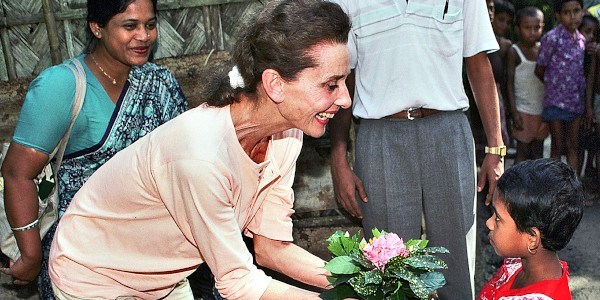
I think she was never really a part of Hollywood. She was neither the place nor the state of mind, even though she’s seen as a Hollywood icon. She lived in Europe and she was separated from it. And I think when the Unicef work came around, it just fit with her life and it was full circle, I guess. She was so angry that this was still happening, that children and mothers particularly were suffering for no other reason than bad governments. She was really passionate about it. She was angry about it, and she devoted the last 10 years of her life to it. Even when she was sick and she knew she was ill, she didn’t stop. She was incredibly dedicated to it.
You’ve said that having a predominantly female crew was important for you with this project. Can you elaborate on that a little, and also explain how you think the dynamic of the film was shifted by the crew?
Helena Coan: My main collaborators were female: Annabel Wigoder, my producer, and my cinematographer, Simona Susnea. But my editor, Mark Keady, was also such an important part of this, so I want to make sure he’s not left out because he was an absolute champion.
Having those key collaborators – your producer and your cinematographer – and particularly, that cinematographer role is very rare. It’s very unlikely to find a cinematographer who’s a woman. And I think having those incredible women, and it wasn’t just them. All of our crew in LA were women, from the sound recordist to the focus puller to the driver, like everyone was a woman.
Audrey’s films were obviously always directed by men because, at that time, that was the case. And it was a really amazing opportunity to see her story through the female gaze, maybe a more sympathetic or empathetic view of her. And to have those female collaborators alongside me as well, just helped to tell her story from a completely different perspective that hadn’t been looked at before. It’s not a tabloid-y look at her life. It’s just a kind of honest, empathetic attempt to understand and deconstruct this woman who’s often heralded as the perfect woman. I think it was really empowering for all of us.
Film Inquiry thanks Helena Coan for her time.
Audrey is available on DVD & Blu-ray now, and will release digitally on January 5, 2021.
Watch Audrey
Does content like this matter to you?
Become a Member and support film journalism. Unlock access to all of Film Inquiry`s great articles. Join a community of like-minded readers who are passionate about cinema – get access to our private members Network, give back to independent filmmakers, and more.
Join now!
